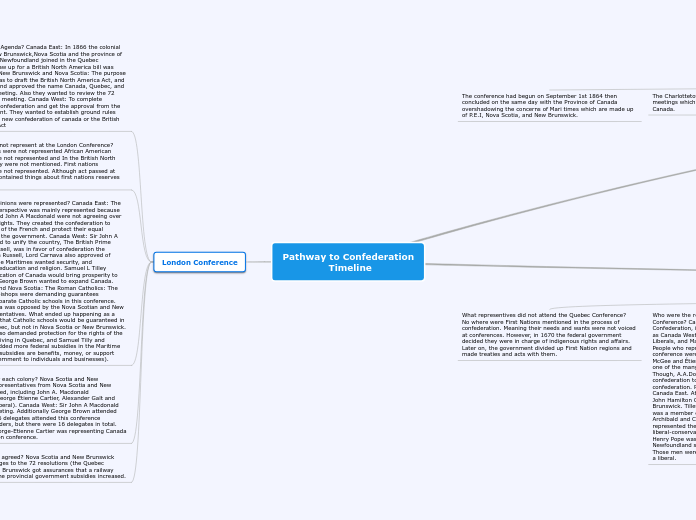por Aryan Adim 5 anos atrás
413
Pathway to Confederation Timeline

por Aryan Adim 5 anos atrás
413

Mais informações
George Brown is important to the confederation of Canada because he was one of the founders of Canada along with George Etienne and John A. Macdonald, they all eventually agreed that confederation would better unify the colonies to resolve the political conflicts in Canada East.
George Brown wanted to decrease French political power and assimilate French Canadians. George Brown was born: November 29, 1818, Alloa, United Kingdom then died on May 9, 1880, Toronto.